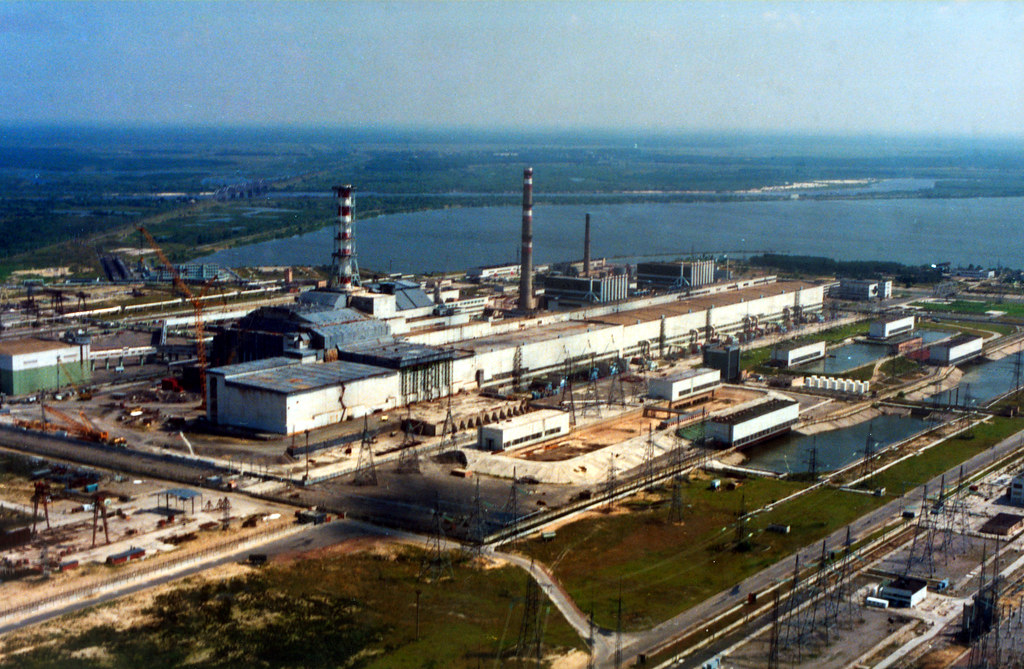Chernobyl made safe: How worst-ever nuclear disaster site is getting a new life
After continuous international efforts spread over decades, the Chernobyl disaster site is finally made safe with a huge New Safe Confinement covering the destroyed reactor but rehabilitation is not expected to start just yet.

- Country:
- Ukraine
On April 26, 1986, a bungled test at the nuclear plant in Chernobyl sent clouds of smoldering nuclear material across large swathes of Europe, forced over 200,000 people, including the inhabitants of the neighboring towns, to evacuate and poisoned unknown numbers of workers involved in its clean-up. But after continuous international efforts which were largely led by European Bank for Reconstruction and Development (EBRD) and were spread over decades, the site is finally made safe with a huge New Safe Confinement covering the destroyed reactor. The NSF is expected to contain the radiation for almost 100 years but rehabilitation is not expected to start just yet.
The Soviet Union had put the death toll after the worst-ever nuclear disaster at 30, but experts suggest that the toll is much higher and long-term impact on the health of others is the subject of debate to this day.
Chernobyl disaster has caught massive attention of the general public in recent times after HBO came out with an interesting television miniseries about the disaster whose viewership ran into millions. The nuclear plant and the abandoned town that neighbors it in Ukraine have witnessed a spike in tourists since the series aired in May to rave reviews.
HBO's Chernobyl also highlighted how a culture of secrecy and obedience in the Soviet Union contributed to the accident and hampered efforts to deal with its aftermath.
What happened at Chernobyl?
The Chernobyl disaster happened during a safety test on an RBMK-type nuclear reactor, which was commonly used throughout the Soviet Union. World Nuclear Association blames "flawed" reactor and irresponsible actions by plant operators for the accident.
The reactor installed at unit 4 of Chernobyl was the most common type of reactor being used throughout the Soviet Union and all of them had a common flaw. There was a peculiarity in the design of the control rods that could trigger a dramatic power surge if operators started an emergency action of putting the rods back into an extremely unstable reactor.
The same thing happened in Chernobyl, plant operators started the emergency action of inserting the control rods back into the reactor which was meant to stabilize the reactor at but due to earlier mistakes, the reactor was in an extremely unstable condition and the design flaw in control rods made it worse, triggering the power surge and resulting in the explosion.
The incident caused huge damage in the immediate vicinity and had a severe impact for decades.
How EBRD made it safe?
The contract for building the New Safe Confinement covering reactor unit 4 was awarded in 2007 and took nearly a decade in the process of construction, positioning, and testing. EBRD handed over the NSF to Ukraine on July 10 after successful testing spread over years.
The New Safe Confinement is expected to prevent the release of contaminated material from the present shelter and at the same time protect the structure from external impacts such as extreme weather, including tornadoes.
The New Safe Confinement is 108 meters high and 162 meters long and has a span of 257 meters and a lifetime of a minimum of 100 years, according to the data provided by EBRD. The arch-shaped structure weighs around 36,000 tonnes.
Latest exclusive #drone footage of #Chernobyl site made safe. As our work draws to a close, we want to thank 🙏 representatives of international community who made this project possible! 👏👏👏 Great example of international cooperation. pic.twitter.com/JMGBXNjx97
— The EBRD (@EBRD) July 10, 2019
It aims to provide a safe working environment equipped with heavy duty remotely-operated cranes for the future dismantling of the shelter and waste management at the nuclear disaster site and its ventilation system will eliminate the risk of corrosion, ensuring that there is no need to replace the coating and expose workers to radiation during the structure’s lifetime.
(Disclaimer: The opinions expressed are the personal views of the author. The facts and opinions appearing in the article do not reflect the views of Devdiscourse and Devdiscourse does not claim any responsibility for the same.)
- FIRST PUBLISHED IN:
- Devdiscourse










